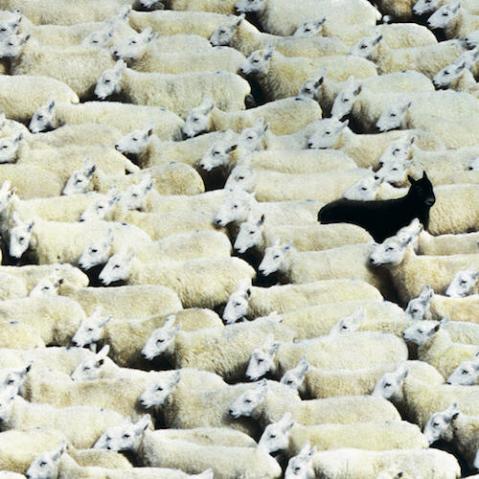Capturing an approaching subject
There’s an entire class of moment that deals with an approaching subject. Generally, anyone looking at a single picture like this, of an Indian elephant with its mahout walking sedately along a coastal road in Kerala, sees a fairly straightforward image, but the decisions and activity that go into getting it right are very specific.

They also benefit from practice. When you’ve done a few of these, you get used to the procedure and start ticking off the checklist. This case was typical. Between seeing the elephant far down the road and shooting there was a little time, about a minute, enough to prepare but not to delay. The idea is that very soon your subject will be properly placed and a good size in the frame, and you will have a clean shot. This is all likely but by no means guaranteed. There are things that can go wrong that are out of your control, such as something getting in the way, or your advancing subject turns off unexpectedly to the side. There are also things that can go wrong that should have been under your control, of which the main one is usually focus, but another common one is leaving it just too late so that the target breaks the frame.
This is the checklist as it applied to the image of the approaching elephant
First, get a good position with decent background, and quickly. In this case it meant stopping the car and running to the side of the road. If absolutely necessary it is possible to move back, but that itself takes up valuable time.
Second, decide the focal length, knowing that the longer the lens (from farther back, of course) the more slowly the advancing subject will change in the frame, so you have more shooting opportunities. In this case, I used a 400mm prime lens, but a zoom would let you pull back for a while to keep the target in frame.

Third, all settings correct, meaning aperture, shutter speed, and ISO, depending on what you need. Here the light was good, so I shot at a low ISO, kept the shutter speed at the slowest necessary for the gentle action, 1/125 second, and that gave me a reasonable depth of field from ƒ/8. Working out what the subject needs in terms of the exposure triangle is one operation that should be smooth, if you think calmly, and you certainly don’t want to waste valuable time.
Fourth, a small point, shots of people or things moving along a road usually look better if you crouch closer to the ground. That way you don’t take up space in the frame with useless foreground.

Note that the way I’ve positioned the elephants in the frame had to take into account their position on the road and how they increasingly fill it up as they get closer. In the first shot, they are too far away, and in the second, still not quite large enough in the frame for what I wanted. In the remainder, all of them are acceptable. I’m using the shadowed arch of tree and branches on the right to hold the right side of the frame, and trying to show as little of the road at the bottom as possible.
The different moments vary mainly because of the way the group is passing through dappled light and shade. The sixth and ninth frames are the best for me—the sixth because of the swing of the lead elephant’s trunk, and the ninth, which I finally chose, because the light shows up the fronds that it is carrying.
One of photography’s true greats, Henri Cartier-Bresson, nailed photography perfectly when he coined the phrase ‘the decisive moment’. No one has come up with a better description, but how do you capture it? This book beautiful new book, Capturing the Moment by Michael Freeman, presented in the style of the acclaimed Capturing Light, deals with the unique power of photography – and the specifically techniques required – to analyse a slice of life and capture it as the perfect still.
[one_whole boxed=”true”]
 Capturing the Moment by Michael Freeman
Capturing the Moment by Michael Freeman
£9.99 Download the PDF now!
Available as an ebook here on Ilex Instant first!
[button color=”Accent-Color” size=”small” url=”https://www.ilexinstant.com/product/capturing-the-moment/” text=”Digital Edition”]
[/one_whole]


